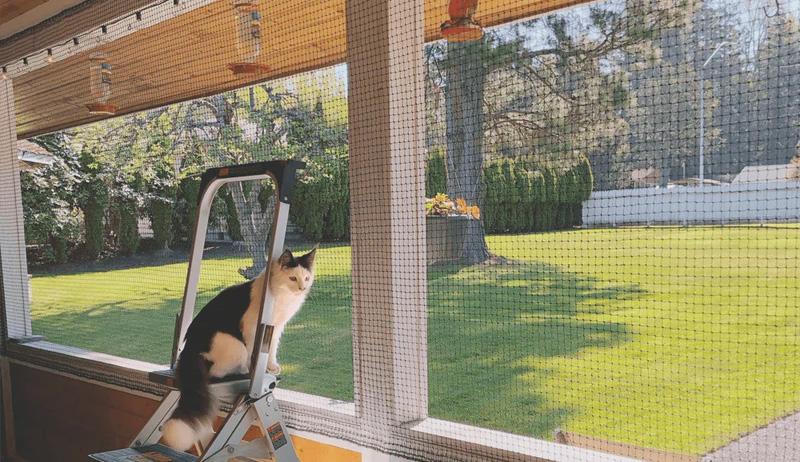
5 minute read
HARISSA CHICKEN, LENTIL AND KALE TRAY BAKE
25m prep 35m cook serves 4
Ingredients
• 3 small carrots, peeled, diagonally sliced
• 2 large red onions, cut into thin wedges
• 1 tbsp chopped fresh rosemary leaves
• 1 tbsp extra virgin olive oil
• 2 tsp harissa paste
• 1 lemon, rind zested, juiced
• 1 garlic clove, crushed
• 8 (about 500g) chicken tenderloins, trimmed
• 400g can no-added-salt brown lentils, rinsed, drained
• 80g Chopped Kale
• 160ml (2/3 cup) salt reduced chicken style liquid stock
• 90g (1/3 cup) labneh, drained
METHOD
1. Preheat oven to 200C/180C fan forced. Line a large baking dish or tray with baking paper. Place the carrot, onion and rosemary in prepared dish and drizzle with the oil. Bake for 15-20 minutes or until light golden and tender.
2. Meanwhile, combine the harissa, 1 tbs lemon juice and garlic in a shallow dish. Add the chicken and turn to coat. Set aside for 10 minutes to marinate.
3. Place the lentils, kale and stock in the dish with the carrot mixture and stir to combine. Top with the chicken. Bake for a further 10-15 minutes or until chicken is cooked through. Top with labneh and a little lemon zest. Season and serve.
25m prep 35m cook serves 4
Ingredients
• 1 1/2 cups (300g) pearl couscous
• 1 cup (120g) frozen peas
• 2 x 150g pkts Deli Baby Bell Peppers Stuffed With Cream Cheese, drained
• 1 red onion, fnely chopped
• 1/3 cup chopped fat-leaf parsley
• 2 tbsp avocado oil or extra virgin olive oil
• 1 tbsp lemon juice
• 1 garlic clove, crushed
• 2 tbsp fnely grated lemon rind
METHOD hunters, and when left to roam freely, they can have a devastating impact on local wildlife, particularly birds, small mammals, and reptiles. By using cat netting, you help protect the local ecosystem and prevent your cat from indulging in its predatory instincts. This is especially important in regions where certain species are vulnerable or endangered.
1. Cook the couscous in a large saucepan of boiling water for 10 mins or until tender, adding the peas in the last 4 mins of cooking. Refresh under cold water. Drain well. Transfer to a large bowl.
2. Add the peppers to the couscous mixture in the bowl with the onion, parsley, oil, lemon juice and garlic. Season. Toss to combine. Transfer to a serving dish. Sprinkle with lemon rind.

If you’re a cat owner with a love for gardening, balancing the safety of your feline friend with the well-being of your plants and wildlife can be challenging. Cats are naturally curious creatures and love to roam, explore, and hunt. However, allowing them unrestricted access to your garden or the neighbourhood can pose risks to both your pets and the environment. One effective solution that has gained popularity is cat netting, which provides a safe outdoor space for your cat without allowing them to wander freely.
Cat netting, also known as a cat enclosure or cat-proof fencing, is a type of mesh or net system designed to keep cats confned to a specifc area while allowing them to enjoy outdoor space safely. It can be installed around your garden, backyard, or on balconies, creating a contained environment where cats can explore, play, and relax without the risk of escaping or coming into harm.

The mesh used in cat netting is usually sturdy and fexible, making it resistant to scratching or tearing by curious cats. The netting is typically installed at a height and angle that prevents cats from climbing over it, ensuring they stay within the designated area.

One of the primary reasons for installing cat netting is to keep your beloved pet safe. Outdoor cats are exposed to numerous dangers, including traffc, predators, and poisonous plants. By confning them to a specifc space within your garden, you reduce these risks signifcantly. Cat netting prevents your pet from wandering into busy streets or getting into dangerous encounters with other animals.
If you’ve spent time and effort creating a beautiful garden, the last thing you want is your cat digging up your plants, using garden beds as litter boxes, or damaging fragile fowers and vegetables. Cat netting can help keep your garden intact by preventing your feline from accessing certain areas, allowing you to enjoy both a happy cat and a thriving garden.
Indoor cats can become bored or stressed if they lack stimulation, and outdoor time can provide them with mental and physical enrichment. With cat netting, your cat can enjoy fresh air, sunshine, and the sights and sounds of nature without the dangers associated with being a free-roaming outdoor cat. It’s the perfect balance between safety and exploration.
Cat netting systems come in various shapes and sizes, and they can be easily tailored to ft your specifc garden layout. Whether you have a small balcony, a spacious backyard, or a compact urban garden, there’s a cat netting solution that can be adapted to your space. You can choose permanent installations or temporary, movable netting depending on your needs.

Installing cat netting in your garden is a relatively simple process, and you can either do it yourself or hire a professional. Here’s a basic guide to help you get started:
Decide where you want to place the netting and how much space you want to allocate for your cat. Consider factors such as the height of fences, proximity to neighbouring properties, and access to shaded areas. Measure the perimeter of the area to determine how much netting you will need.

You’ll need durable, weather-resistant mesh or netting material, and any necessary hardware, such as clips, fasteners, or brackets. Look for netting specifcally designed for cats, which will be strong enough to withstand scratching and climbing.
If your garden already has a fence, wall, or other structure, you can install directly onto that structure. You can also get designated poles to hold the netting in if you don’t have a solid structure. To stop the cat from climbing over the net, insert poles and netting at an angle towards the base. The poles should be angled inward at around 45 degrees to prevent your cat from climbing over the netting.
Once the poles are in place, attach the netting to the top of the fence or poles using fasteners or clips. Make sure the netting is taut and free of gaps where a determined cat could squeeze through. The netting should extend across the entire area you wish to enclose.
Check the base of the netting to ensure there are no gaps where your cat could dig under or slip through. You can secure the bottom of the netting with pegs or stones if necessary.
After installation, observe your cat’s behaviour to ensure they cannot escape or fnd weaknesses in the netting. Make any adjustments to the structure as needed.
Cat netting is an excellent investment for pet owners who want to give their cats the freedom to enjoy the outdoors while keeping them safe and protecting the garden. It’s a humane solution that benefts both your cat and the local wildlife. Whether you’re a seasoned gardener or a new pet owner, cat netting offers peace of mind, knowing that your cat can enjoy nature without the associated risks.

















